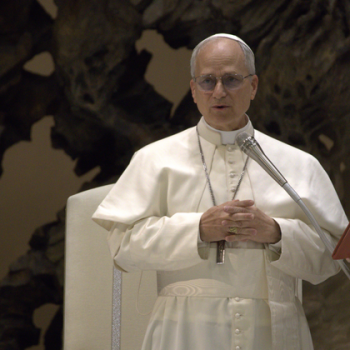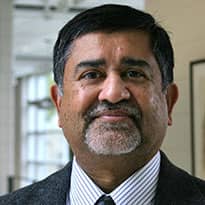There are always exceptions, of course, and incidents and events in our life that are out of the ordinary bring pause. Tragedies, death, disease, and distractions happen to and afflict all of us, even to the stylish, articulate, well-connected, and well-heeled contemporary urban men and women. In those moments and times some of us may be tempted to seek relief, in the form of therapy (if your insurance allows it), or visits to the local wine and liquor store, a spa in Darjeeling, or a vacation in Bali. Something like that happened to our author, and traveling from New Delhi to Mumbai, after a vacation in Nepal, she "started dying." Coming out of that death "funk" she sought help in books, going beyond the merely fashionable treatises on existential anxiety to the works of and about Ramana Maharshi, Ramakrishna Paramahamsa, and other mystics and sages. But after a while, books become repetitious, and they lose their ability to soothe. You can only take so much of "God talk," and so many accounts of miracles and mysteries before you begin to yawn, and trudge to the refrigerator for a soothing nightcap, or in the case of Subramaniam begin to look for someone who actually "knows" and who would guide her out of her misery, her loneliness, and out of the cul-de-sacs of the mind.
In May 2004, Arundhathi Subramaniam attended a talk by Sadhguru. Six years later, after many conversations with him, and those around him came the book. She still has problems calling him "Sadhguru" for "ceremonial nomenclature" makes her "uncomfortable." I doubt it is just the nomenclature; our modern, contemporary sensibilities demand that we identify every other person as our equal, and our egos, boosted/bolstered by authoring a book, earning a million, or a special graduate degree don't easily wish to acknowledge the worth or weight of someone more accomplished and able!
There is much in the book that satisfied my curiosity about Jaggi Vasudev's early life: stories of his parents, his siblings, his childhood, his truancy, his peculiar ways, and some out of the ordinary experiences, including his mentoring by the accomplished yoga teacher, medicine man, and social worker Malladihalli Raghavendra Swamy. Then there are the stories of Jaggi's mischief, political activism, loves and affairs, distractions and devotions, cigarette smokes, beer, and English movies watched. Anecdotes from Jaggi Vasudev's life resonate with those of us who grew up middle-class, in the South Indian state of Karnataka. But the pre-guru stage of his life, even though a tell-able tale by itself, takes on an extraordinary dimension, and what we then see is a young man who begins teaching yoga to a small group of people, initially in Mysore, and then in Coimbatore, mesmerizes them, goads them to superhuman deeds, marries a young divorcee, and creates a unique meditative space in the Velliangiri mountains close to the city of Coimbatore. The tales of past lives, past promises having to be kept and goals to be accomplished, and lovers, friends, teachers, and disciples from the past reappearing to help him do what he had to do and has done can either be dismissed as a fairy tale, a con man's tall tale, or manifestations of the extraordinary and the "real" that we, the ordinary ones, fail to grasp or don't have the capacity to understand.
Subramaniam is doubtful too, has misgivings, and is exasperated by the Sadhguru who is inconsistent in his answers, too flamboyant sometimes for her taste, too willing to let people fall at his feet, and who has now built a very large institution with some very large buildings, however aesthetically pleasing they may be. He travels the world now, dances with the wives of tipsy industrialists in Davos, and packages his words and himself in a variety of saleable media products. Schools, cottage industries manufacturing earth-friendly products, and other Isha Foundation ventures have become brisk and big business. However, ". . . every time I meet the guru himself, my ambivalence invariably drops away," writes Subramaniam. "There's nothing phoney here, no comforting platitudes, no smarmy PR-savvy spiritualism. There is a dynamism and stillness about his presence that I instinctively trust."
Subramaniam once asks the Sadhguru about the fateful nature of life, and if indeed there is any respite for those who are fated to slouch their way along the road of continual despair. "Many are called, but few are chosen, aren't they?" she asks him, quoting Matthew (22:14). "No, no . . . It is just that many are called but few choose," he responds. However, this is where the tale of and the remarks by the Sadhguru become inconsistent. If indeed he is the incarnation of Bilva, a devotee of Lord Shiva, who 360 years ago fell in love with a Brahmin girl, was hounded and killed, or that in another lifetime, he was Sadhguru Sri Brahma, and that his present day disciple and fellow conspirator, Bharathi, and wife Vijaya Kumari (Vijji) were his companions in their past lives, how can it be that he is not "chosen"? How can it be that some of us struggle to lift ourselves by our spiritual bootstraps but cannot get past the daily half-hour of pretend meditation? Who knows?
If consistency is the hobgoblin of small minds, then we can forgive the Sadhguru of speaking from both sides of his mouth. There are yet other, more troubling inconsistencies about his life and his assertions that have been noted by his detractors. But it is time to conclude, with Subramaniam, that Sadhguru ". . . is a strange man—a very strange man—but . . . he's for real."





